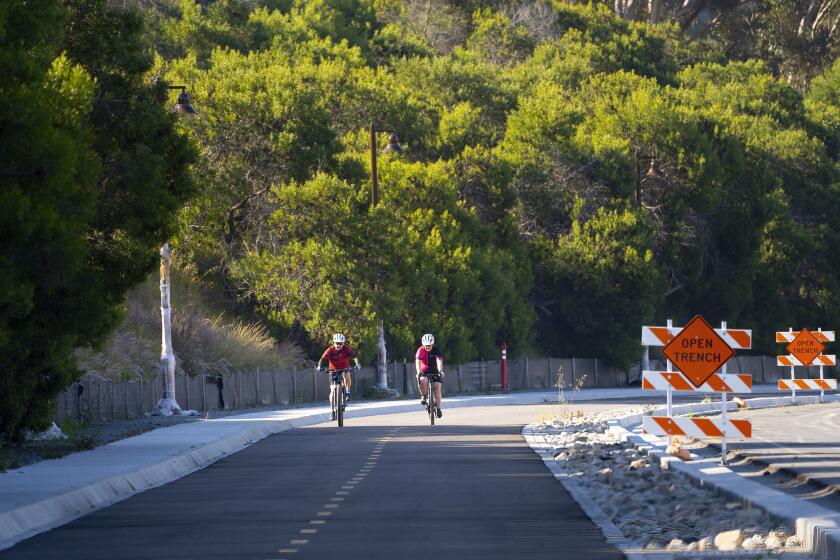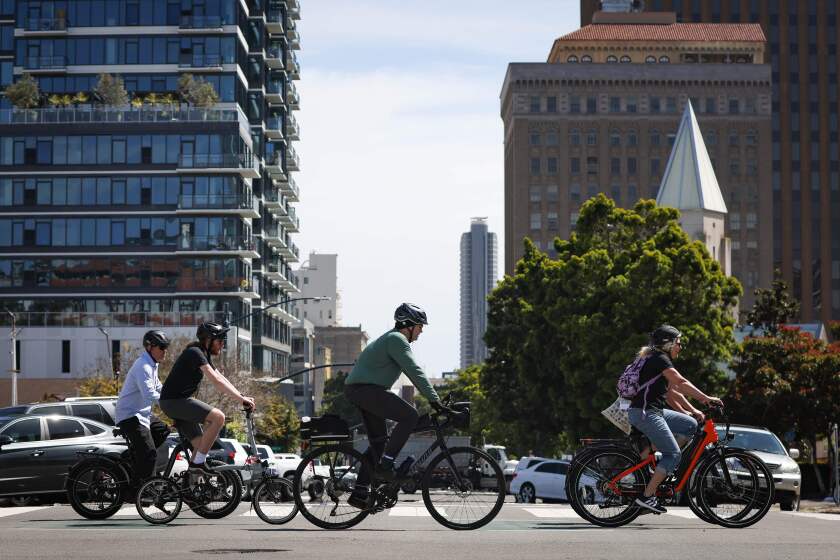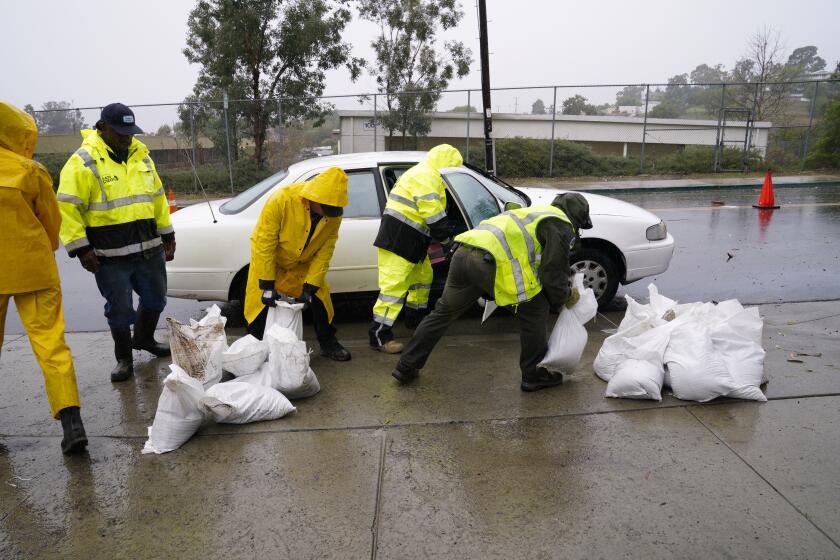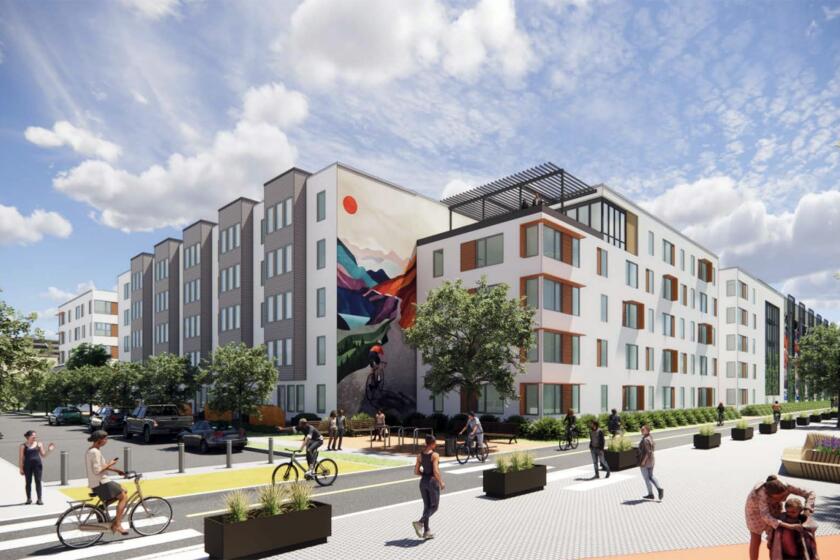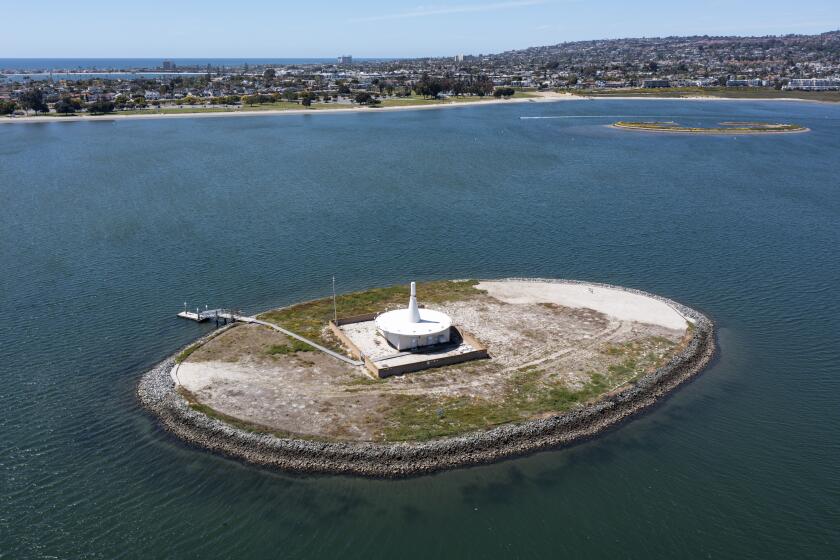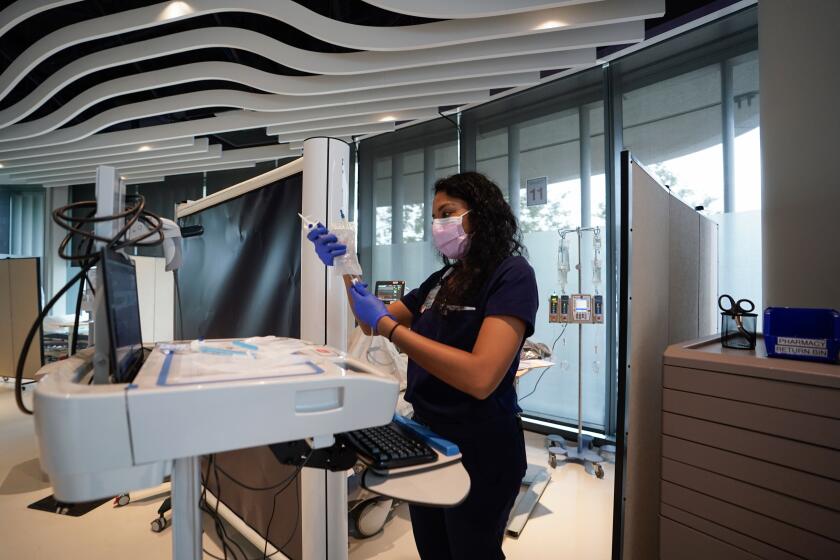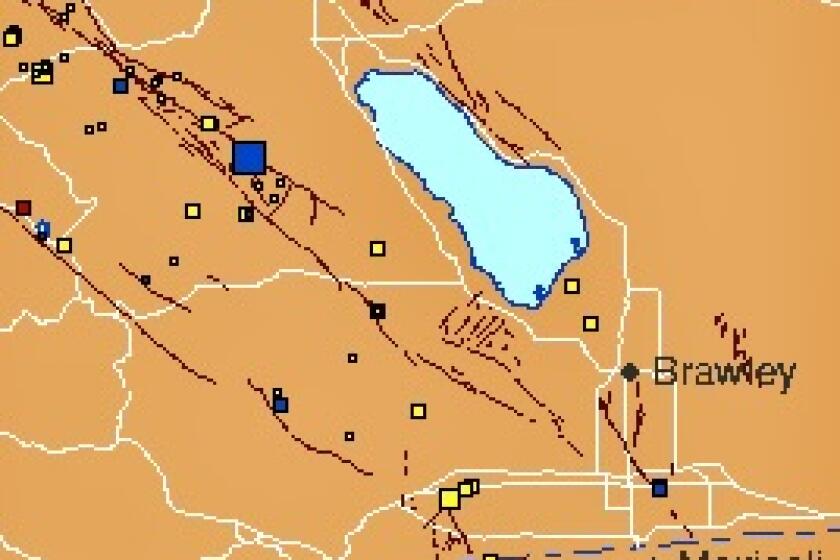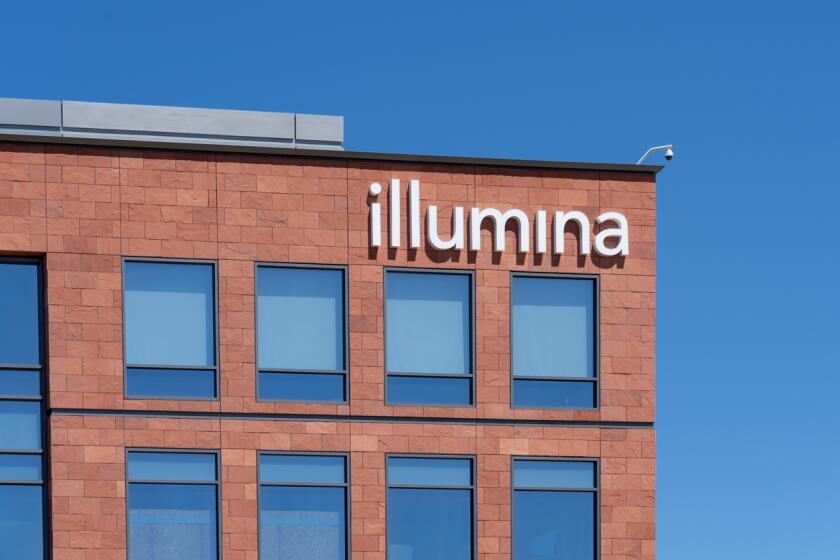Faulconer unveils bold climate plan
Mayor Kevin Faulconer unveiled a new city blueprint for fighting climate change on Tuesday that would use a package of new regulations and incentives to cut San Diego’s carbon emissions in half by 2035.
The sharp reduction would be achieved primarily through increased commuting by bicycle and mass transit, greater use of electric vehicles, retrofitting of older buildings, the planting of many more trees and expanded use of solar and other renewable energy sources.
The mayor’s proposal, called a Climate Action Plan, has been much anticipated by environmentalists, who have lobbied for as strong a plan as possible, and business leaders, who had expressed opposition to a previous version of the plan released last winter.
Environmental groups and business leaders both generally praised the plan Tuesday as ambitious, but also realistic and doable.
Faulconer gained the support of business and real estate leaders partly by eliminating a requirement that many property owners make their homes and commercial buildings more water and energy efficient before they could sell them.
Instead, the plan calls for a new city law requiring property sellers to disclose energy and water usage, and to outline how much could be saved if new owners made efficiency upgrades.
Faulconer also described the plan as business-friendly, predicting it would create a surge in local clean technology and other environmentally friendly jobs.
“I truly believe we have an opportunity to make San Diego one of the green energy and solar capitals of the world,” the mayor said at a press conference atop a city water treatment plant covered with solar panels. “This is a plan for creating economic opportunity for every San Diego family and community.”
City Council President Todd Gloria, who unveiled a slightly more ambitious climate action plan last winter while serving as interim mayor, praised Faulconer’s updated version.
“The plan that we’re announcing today comprehensively addresses the major environmental challenges of our day,” he said. “I’d say about 97 percent of what I proposed is still in there, and the parts that aren’t are offset by other ways of reducing greenhouse gases.”
Kayla Race, a policy analyst for the Environmental Health Coalition in National City, said she was optimistic that the changes Faulconer made to Gloria’s plan hadn’t significantly weakened it.
“We want to take the time to thoroughly review the plan, but I feel optimistic based on what’s been said,” said Race, expressing support for the modified method of encouraging property retrofits. “If residents can actually see the specific measures they can take and what their financing options are, that would be a positive step.”
Business groups said they look forward to further public discussion of the 68-page plan, which will undergo a thorough environmental analysis this fall and then be debated next year by the City Council.
“We applaud Mayor Faulconer’s collaborative approach and focus on green jobs and technology,” said Chanelle Hawken, executive director of public policy for the San Diego Regional Chamber of Commerce. “We look forward to the public discussion.”
Critics often question whether costly local, state and even national plans to address climate change will have the necessary global impact. City officials said Tuesday they can’t wait for leaders in Washington, D.C., to take action.
“We must take meaningful action here,” Gloria said.
The decrease in carbon emissions included in the plan, which would be legally binding on the city, would allow San Diego to meet reductions the state has mandated by 2050. The plan calls for cutting carbon emissions 15 percent by 2020 and 49 percent by 2035.
Faulconer and Gloria said those targets won’t be easy to meet.
“San Diego will need to retool our entire approach to our consumption,” Gloria said.
Much of the decrease would come from reductions in carbon emissions connected to transportation. That would be achieved by encouraging greater density within existing neighborhoods, which is called the “City of Villages” plan.
Denser neighborhoods and the addition of more transit options would allow more people to walk, bike or take transit to work, the plan says.
For example, the plans says the percentage of people bicycling to work in the city’s densely populated neighborhoods would increase from about 2 percent to 6 percent by 2020 and then to 18 percent by 2035. Transit use would rise from about 4 percent to 12 percent by 2020 and to 25 percent by 2035.
In addition, the plan proposes new laws and new city policies.
The new laws include requiring property owners to install sprinklers that automatically don’t run after it rains, and mandating that developers install conduit for solar power and for electric vehicle charging stations in all new construction.
Proposed changes to city policy include requiring that 50 percent of city vehicles be electric by 2020 and that 90 percent be electric by 2035.
“It’s very important that the city of San Diego and city government leads by example,” Faulconer said.
Other city policy changes include:
• Setting a goal of 100 percent renewable energy use by 2035.
• Converting all city trash trucks to natural gas by 2035.
• Installing 35 traffic roundabouts by 2035.
• Recalibrating the timing of 200 stoplights each year.
• Planting trees to achieve 35 percent urban tree coverage by 2035.
Get Essential San Diego, weekday mornings
Get top headlines from the Union-Tribune in your inbox weekday mornings, including top news, local, sports, business, entertainment and opinion.
You may occasionally receive promotional content from the San Diego Union-Tribune.

